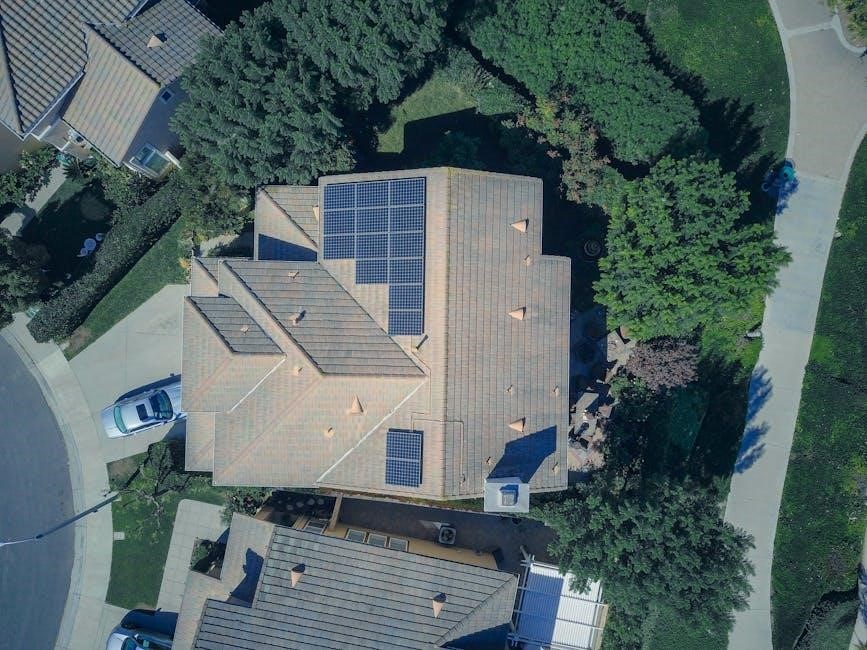Step-by-Step Installation Guide for Suntuf Panels
Measure the width of your structure and divide by 760mm to determine the number of Suntuf sheets needed. Ensure proper spacing and alignment for a secure fit.
Cut Suntuf panels using a fine-tooth saw. Predrill holes for fasteners to avoid cracking. Always install with the UV-protected side facing outward for durability.
Mount roofing battens at 400mm centers to support the panels. Ensure battens are level and securely fastened to the structure for even weight distribution.
Align panels with battens, starting from one end. Use recommended fasteners and ensure panels are tightly secured. Remove protective tape immediately after installation.
Use EPDM rubber washers to seal fasteners and prevent leaks. Tighten securely but avoid over-tightening, which may damage the panels. Check roof pitch is at least 5 degrees.
Measuring and Planning
Begin by measuring the width of your structure to determine the number of Suntuf panels required. Divide the width by 760mm to calculate the exact quantity needed. Ensure the roof pitch is at least 5 degrees (87mm per 1000mm) for proper water runoff. Plan the layout to allow for slight overhangs at the edges for a seamless fit. Always handle panels with care to avoid physical damage. Store them horizontally in a shaded area until installation. Proper planning ensures a smooth and efficient installation process, preventing costly mistakes and material waste.
Cutting and Drilling
Cut Suntuf panels using a fine-tooth saw or utility knife for straight edges. For curved cuts, use a jigsaw with a fine-tooth blade. Always predrill holes for fasteners to prevent cracking. Ensure the UV-protected side faces outward during installation. Use a pencil to mark cut lines and drill holes carefully. Avoid applying excessive pressure, which may damage the panels. Clean the panels with a soft cloth before cutting to remove dirt or debris. Proper cutting and drilling techniques ensure a precise fit and prevent damage during installation. Always wear safety gear, including gloves and goggles, when cutting polycarbonate panels.
Installing the Roofing Battens
Install roofing battens horizontally or vertically, depending on the panel orientation. Space battens at 400mm centers to ensure proper support. Use durable, rot-resistant materials like treated wood for longevity. Secure battens firmly to the structure using screws or nails, ensuring they are level and evenly spaced. This provides a stable base for mounting Suntuf panels. Check for any warping or damage in battens before installation, as this can affect panel alignment. Properly installed battens prevent sagging and ensure a smooth, even surface for the panels to adhere to. Always follow manufacturer guidelines for batten installation to maintain structural integrity and warranty validity.
Mounting the Suntuf Panels
Begin by aligning the Suntuf panels with the pre-installed battens, ensuring the UV-protected side faces outward. Start from one end of the structure and work across, securing panels with approved fasteners. Remove the protective tape immediately after installation to prevent adhesion issues. Ensure panels are tightly fastened but avoid over-tightening, which may damage the material. Maintain proper spacing between panels for expansion and contraction. Double-check alignment and secure all edges firmly to prevent movement or shifting during weather conditions. Verify that the roof pitch meets the recommended minimum of 5 degrees for optimal performance.
Securing with EPDM Washers and Fasteners
Use EPDM rubber washers to create a watertight seal when securing Suntuf panels. Predrill holes slightly larger than the fasteners to prevent cracking. Place an EPDM washer on each fastener before screwing it into the roofing batten. Tighten screws firmly but avoid over-tightening, which could damage the panel. Ensure all fasteners are uniformly secured across the panel surface. Check that the roof pitch meets the minimum recommended angle to prevent water pooling. After installation, inspect all fasteners and washers to ensure proper sealing and alignment. Regularly inspect and tighten fasteners as needed to maintain the integrity of the roofing system.
Essential Tools and Materials Needed
Required tools include a fine-tooth saw, drill, screwdriver, and measuring tape. Materials needed are EPDM washers, fasteners, and sealing tape for secure installation.
List of Required Tools
- Fine-tooth saw or circular saw for cutting panels.
- Drill and bits for predrilling holes.
- Screwdriver for securing fasteners.
- Measuring tape for accurate measurements.
- Utility knife for trimming edges.
- Pencil for marking cut lines.
- Safety goggles and gloves for protection.
- Ladder or scaffolding for reaching heights.
- Level to ensure proper alignment.
- Rubber mallet for tapping panels into place.
Recommended Fasteners and Accessories
For a secure and durable installation, use Palram-approved EPDM rubber washers and self-tapping screws. Ensure fasteners are compatible with Suntuf panels to prevent damage. Sealing tape and closure fixtures are essential for sealing ends and edges. Avoid using non-recommended materials, as they may compromise the panel’s integrity. Always follow the manufacturer’s guidelines for fastener spacing and torque to ensure a leak-proof and long-lasting installation. Properly sealing all gaps will enhance weather resistance and maintain the structural integrity of your Suntuf roofing system.

Safety Precautions and Best Practices
Store Suntuf panels in a cool, shaded area to prevent warping. Transport and handle panels horizontally to avoid physical damage. Clean regularly with warm soapy water for maintenance.
Handling and Storage Tips
Store Suntuf panels in a cool, shaded area away from direct sunlight to prevent warping. Transport panels horizontally to avoid bending. Handle with care to prevent scratches or cracks. Clean panels with mild soap and water before installation. Avoid exposure to extreme heat or chemicals. Use protective film during transportation to shield from damage. Ensure panels are dry and free of debris before storing. Check for damage before installation and use approved accessories to maintain integrity.
Safety Measures During Installation
Wear protective gear, including gloves, safety glasses, and a dust mask, when cutting or drilling Suntuf panels. Ensure proper ventilation to avoid inhaling dust. Use ladder safety and maintain three points of contact. Avoid over-tightening fasteners to prevent panel damage. Inspect panels for cracks or damage before installation. Work with an assistant when handling large panels to prevent accidents. Secure panels immediately to avoid wind damage. Follow manufacturer guidelines for tools and materials to ensure a safe and durable installation. Keep the work area clear of debris and ensure proper lighting for visibility.

Troubleshooting Common Issues
Address leaks by inspecting panel connections and ensuring EPDM washers are properly sealed. Fix warped panels by checking installation alignment and storage conditions. Avoid over-tightening fasteners.
Addressing Leaks and Gaps
To address leaks, inspect panel connections and ensure EPDM washers are tightly sealed. Resecure fasteners if necessary, as gaps may develop over time. Check for improper alignment or loose fasteners, which can cause water seepage. Inspect lap joints for adequate overlap and proper sealing. If leaks persist, apply silicone sealant to affected areas. Ensure panels are installed with the UV-protected side facing outward, as improper orientation can lead to accelerated wear. Regularly inspect and maintain the structure to prevent future issues.
Fixing Warped or Damaged Panels

Inspect panels for warping or damage. For minor damage, clean and apply silicone sealant to prevent further issues. If panels are warped, check installation alignment and adjust battens if necessary. Replace severely damaged panels to maintain structural integrity. Ensure proper handling during repairs to avoid additional damage. Use only PALRAM-approved accessories for a secure fix. Regularly inspect panels to address issues early and prevent further damage. Proper installation and maintenance are key to avoiding warping and ensuring longevity. Always follow the manufacturer’s guidelines for repairs and replacements to uphold the product’s warranty and performance.

Maintenance and Care Instructions
Regularly inspect Suntuf panels for damage or debris. Clean with a soft cloth and mild detergent to avoid scratching. Avoid harsh chemicals or abrasive materials. Ensure fasteners are secure without over-tightening. Follow manufacturer guidelines for optimal maintenance and longevity.
Cleaning and Regular Inspection
Regularly clean Suntuf panels with a soft cloth and mild detergent to maintain clarity and prevent dirt buildup. Avoid using harsh chemicals or abrasive materials that may scratch the surface. Inspect panels for cracks, warping, or loose fasteners. Ensure all fasteners are securely tightened without over-tightening, which can damage the panels. Remove debris from the roof surface to prevent water accumulation and potential damage. Clean the panels at least twice a year, or more often in areas with heavy weather conditions. Regular inspection helps maintain structural integrity and prevents minor issues from becoming major problems.
Tips for Longevity and Durability
To ensure Suntuf panels last, install them with the UV-protected side facing outward. Use only PALRAM-approved fasteners and accessories, such as EPDM rubber washers, to prevent leaks and damage. Seal gaps with recommended sealing tape and silicone to maintain weather tightness. Avoid using harsh chemicals or abrasive cleaners, as they can damage the polycarbonate surface. Store panels horizontally and in shaded areas during installation to prevent warping. Regularly inspect and tighten fasteners to maintain structural integrity. These practices will help extend the lifespan and maintain the clarity of your Suntuf panels over time.
Additional Resources
Consult the official SUNTUF Installation Guide for detailed instructions. Watch video tutorials on Palram’s website for visual guidance. Refer to form 2203 for care and maintenance tips.
Official Suntuf Installation Guide
The official guide provides a comprehensive 56-page booklet for installing Suntuf panels. It covers measuring, cutting, and mounting processes in detail. Ensure UV-protected side faces outward and remove protective tape immediately after installation. The guide also includes troubleshooting tips and maintenance instructions. Available on Palram’s website, it’s ideal for both DIY enthusiasts and professionals. Refer to page 15 for specific installation steps and recommendations on tools and materials. This resource is essential for a successful and durable installation, ensuring optimal performance of your Suntuf panels over time.
Video Tutorials and Expert Advice
Palram offers video tutorials for installing Suntuf panels, providing visual guidance for DIY enthusiasts and professionals. A 2014 video overview covers key steps for corrugated roofing products, including Suntuf. These tutorials demonstrate cutting, drilling, and mounting techniques, ensuring a flawless installation. Expert tips include using EPDM washers and recommended fasteners to prevent leaks. Videos also address common issues like warping and proper panel alignment. Available on Palram’s website and YouTube, these resources complement the official guide, offering practical insights for a successful project. They are ideal for those seeking hands-on instruction and troubleshooting solutions.
